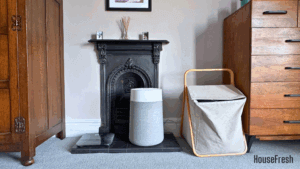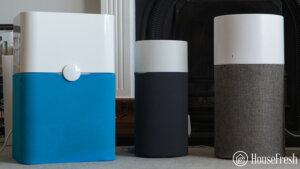Levoit and Blueair are heavyweight brands, producing air purifiers that are sold across the world.
Levoit has been making air purifiers for over ten years and has earned a reputation for releasing reliable and innovative products with a budget price tag. They have even developed their own signature technologies to use in their units like VortexAir™, QuietKEAP™ and AIRSIGHT™ Plus.
With two decades of experience, Blueair is known for taking the style of air purifiers to new levels, even winning awards in design along the way. They don’t only concentrate on looks; Blueair strives to push filter technology across their air purifiers with HEPASilent™ Technology (electrostatic filtration with HEPA) exclusive to Blueair units.
These two units showcase each company at the top of their game with the Core 600S from Levoit and Blue Pure 211+ from Blueair, so we wanted to pit them against each other. But we didn’t want to go on power and cleaning ability alone; we know you (the consumer) have more needs and wants from an air purifier.
So read on, where we examine looks, controls, filters, electricity consumption, noise levels and air cleaning performance to see who will reign victorious in the battle of these two incredible air purifiers.
TL;DR: Which unit wins overall?

“We always knew this would be a hard decision as these two units display amazing qualities. But ultimately I choose the Levoit Core 600S as our overall winner for its impressive air cleaning performance, added smart functions, low noise output and energy efficiency.”
— Danny Ashton, Founder & Senior Writer

Don’t want to read the full article? Don’t worry; I’ll condense it.
The pros and cons compared
| Blueair Blue Pure 211+ | Levoit Core 600S |
 | 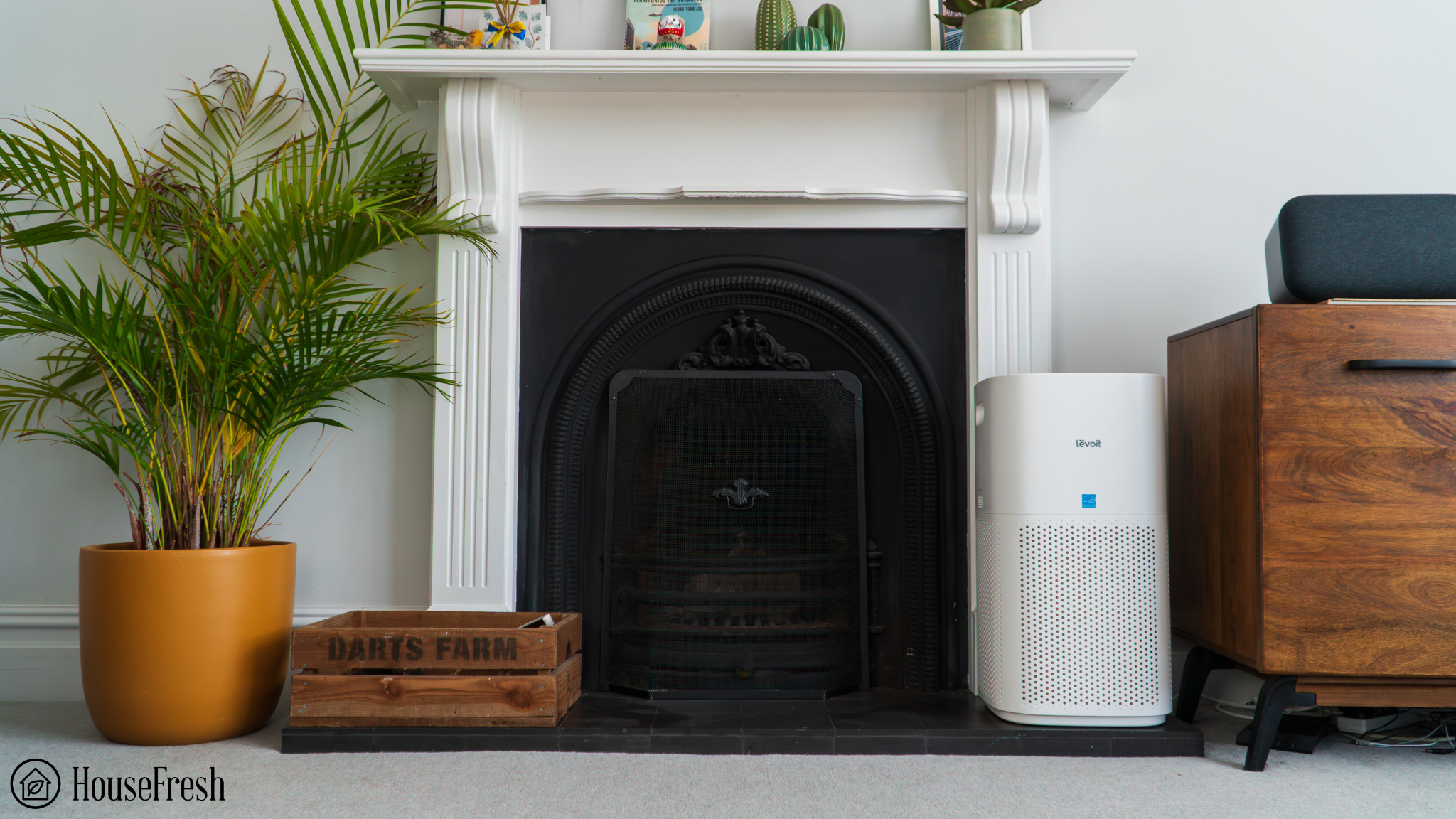 |
| What we really like | What we really like |
| 👍 Very simple to operate: you will do it all with just one button. 👍 It is super quiet considering its power. 👍 You can customize the design with a variety of pre-filter fabrics. 👍 Cleared our test room in 18 minutes. | 👍 The mobile app is great and can connect to Alexa or Google Home. 👍 It offers a high CADR for a low price. 👍 It is easy to move around thanks to the handles at each side. 👍 Cleared our test room in 15 minutes. |
| What we think could be better | What we think could be better |
| 👎 The HEPASilent technology in the Blue Pure 211+ uses a bipolar ionization process with the potential of generating small amounts of ozone, and this is a feature that cannot be disabled. 👎 After using the 211+ at home for a few years, the mechanism to open the top doesn’t hold as well so sometimes I accidentally open the device when trying to move it around. 👎 It’s too big and too heavy not to have a handle somewhere to make it easier to move around. | 👎 The main filter in the 600S is not, in fact, a True HEPA filter as advertised initially by Levoit. This doesn’t affect its performance, but it’s something we need to mention here. 👎 It makes an annoying whirring sound at low fan speeds that might bother you if you’re sensitive to sound. 👎 The sensor needs to be vacuumed regularly to ensure accurate readings. |
The specifications compared side-by-side
The Levoit Core 600S is the clear winner due to its higher CADR score, its fastest cleaning performance and the additional smart features.
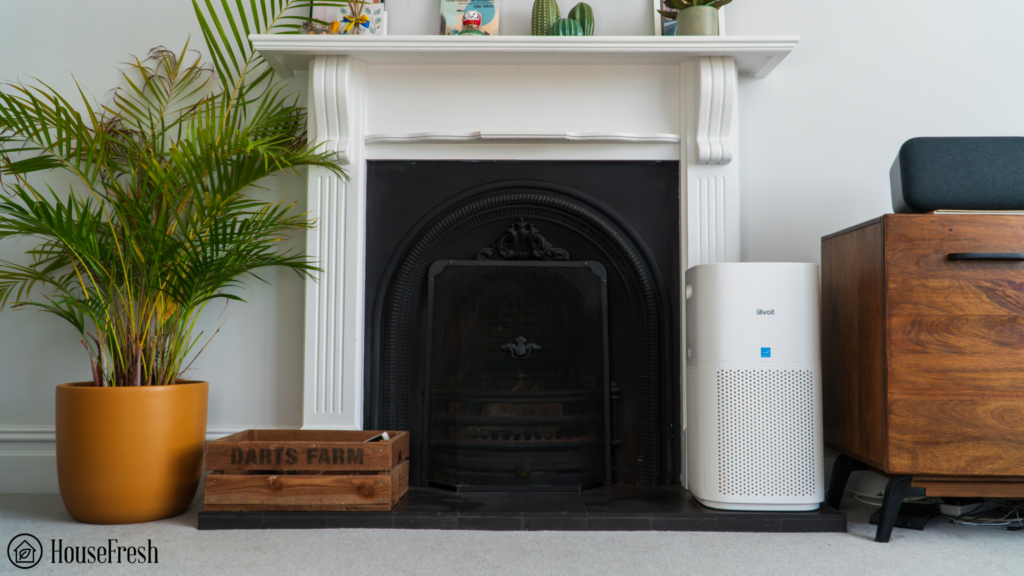
Both air purifiers retail at around $300, which is incredible value for money when it comes to performance. With a lack of extra features in the 211+, the 600S wins overall. It can also be used in larger rooms (up to 635 sq. ft. vs. 540 sq. ft.) and has a higher clean air delivery rate (CADR) of 410 CFM vs. 350 CFM (Cubic Feet per Minute) from the 211+.
The only other air purifier we have tested with similar performance is Smart Air’s Blast Mini, which is substantially bigger and retails at around $600.
| Levoit Core 600S | Blueair Blue Pure 211+ | |
| HouseFresh rating: | ★★★★★ | ★★★★☆ |
| Time to clean our test room: | 15 minutes | 18 minutes |
| Air purifier technology: | 3-Stage Filtration (Pre-filter for large particles, main filter for airborne particles, high-efficiency activated carbon filter for odors and gasses) | HEPASilent™ Technology (electrostatic filtration with HEPA) and Activated Charcoal Filter + Ionizer technology |
| Recommended room size: | 635 sq. ft. | 540 sq. ft. |
| Clean air delivery rate (CADR): | 410 CFM | 350 CFM |
| Dimensions (in inches / in cm): | 23.6H x 12.3W x 12.3D inches (60H x 31.3W x 31.3D cm) | 20H x 13W x 13D inches (51H x 33W x 33D cm) |
| Weight (in pounds / in kg): | 13.7 lbs (6.2 kg) | 12.5 lbs (5.67 kg) |
| Noise level (low – high): | 26 – 55 dB | 31 – 56 dB |
| Filter life: | 6 months | 6 – 8 months |
| Estimated energy consumption: | $51.51 per year | $64.12 per year |
| Price: | $219.99 | $343.99 |
The design elements compared
When it comes to the design aesthetics, the winner is the Blueair Blue Pure 211+ due to its brightly colored, customizable pre-filter and cosmic-looking grill.
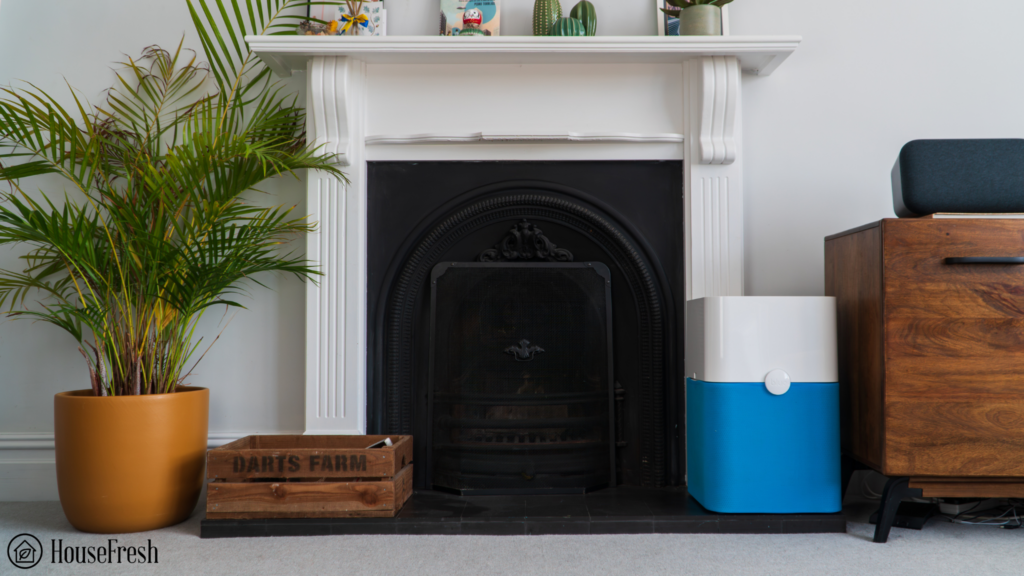
Don’t get me wrong, the 600S doesn’t look bad, but it just looks like a traditional air purifier. It has curved edges that are more aesthetic than a straight box shape and unobtrusive branding.
The problem is, there’s not much else to comment on.
Design and look are subjective, and the 600S is great for those who don’t want their air purifier to be noticed, but with its lack of creative design, it’s a little too plain for my taste.
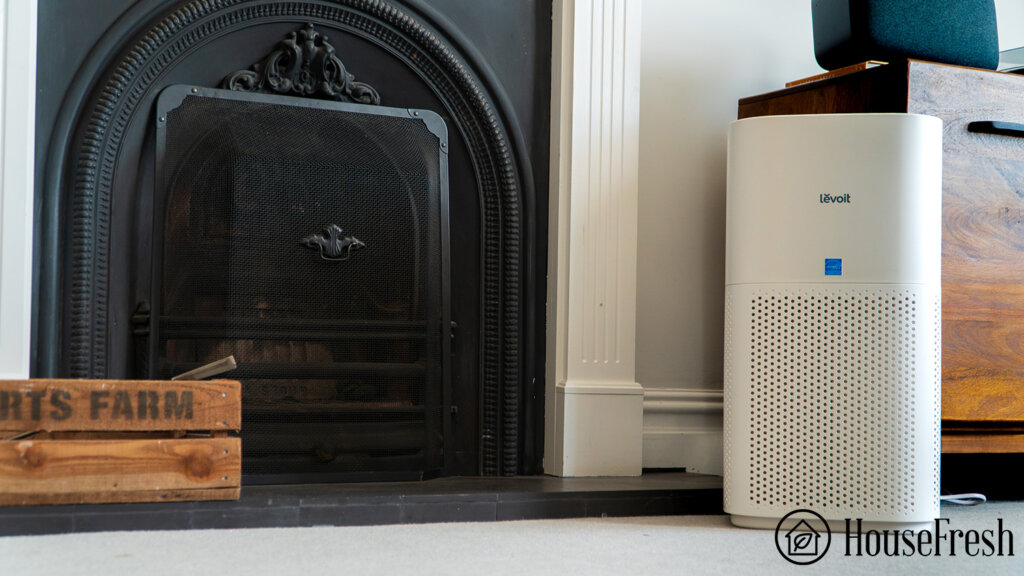
Blueair, on the other hand, is a brand that uses design to set it apart from other brands producing “traditional” looking air purifiers, making them extremely popular with consumers who want an air purifier to fit into their modern lifestyle.
A great feature Blueair offers is its customizable pre-filters. The 211+ uses an exterior fabric pre-filter that is not just easy to clean (helping extend the life of its HEPA filter) but also offers a chance to adopt different colors so that you can customize your air purifier to fit the aesthetics of your room. Choose from Crystal Pink, Buff Yellow, Dark Shadow, Lunar Rock or the classic Diva Blue.
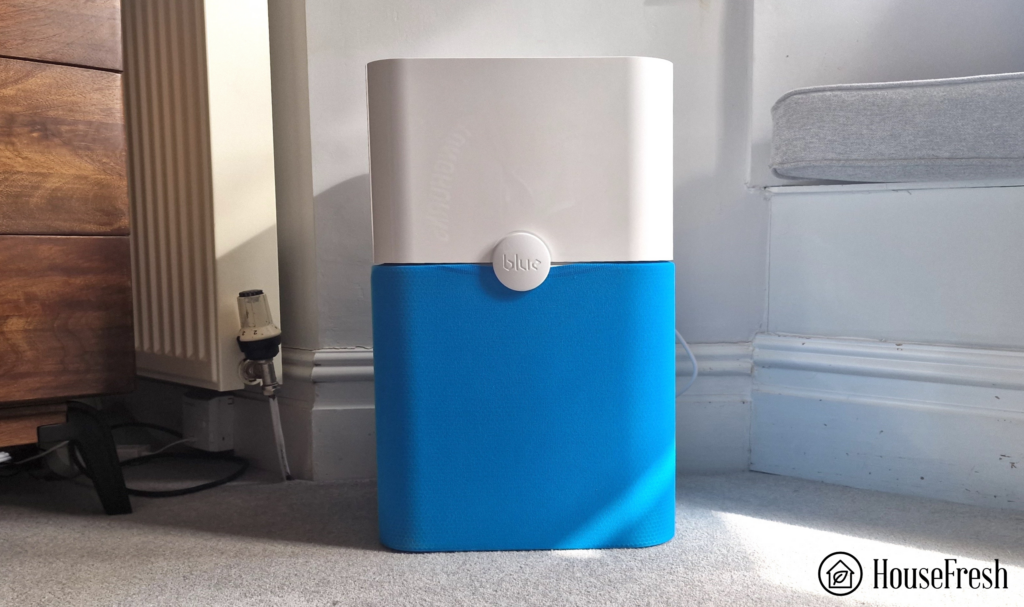
When you stand them side-by-side, the differences are clear. Although they’re both box-type units, the 211+ is more stylized with its fabric pre-filter and gloss top.

Ease of use and control panel compared
When it comes to the control panel, the winner has to be the Blueair Blue Pure 211+ with its one-button control, making it super easy to use.
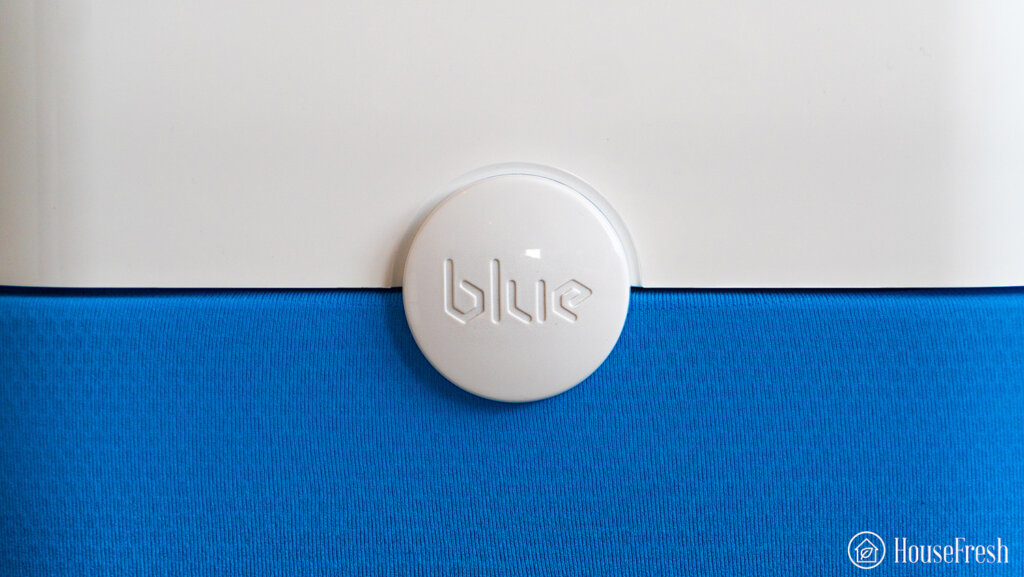
The Blue Pure 211+ may not be able to connect to an app or have any smart functions like an auto mode or air quality monitor, but with its one-button design, the 211+ could be the easiest air purifier to operate on the market.
All you need to do is push the button once to turn it on, press it to scroll through the various fan speeds, then push it again to turn it off. You can’t get simpler.
The large button on the front also acts as a filter replacement indicator, so you know when it’s time to buy a new HEPASilent™ filter. It will automatically glow yellow after five months of operation, giving you time to buy a replacement; when the filter is full, it will glow red to indicate that you need to install the new filter.
That said, the control panel in the Levoit Core 600S is also pretty good, if a little more complex:

Levoit has packed the 600S with additional features like an auto mode, sleep mode, timer, numerical & color-coded air quality monitor and the ability to turn off the display lights. But all of these functions need a button to operate them.
Yes, it’s intuitive and each button is spread out in a circle; nevertheless, the buttons are touch-sensitive and sometimes don’t activate on the first press, which can be frustrating.
The best control function Levoit has for its S range is the ability to control your air purifier using the VeSync app on your smartphone. It’s easy to set up and once your device is connected, you can control the settings and fan speed, turn it on/off and monitor the air quality in your home…from anywhere in the world with an internet connection.

Air filtration technology compared
The Levoit Core 600S wins in our view due to its HEPASmart™ technology + concentration of activated carbon. Plus, we don’t like the fact that the ionizer in the 211+ cannot be turned off.

Levoit provides us with a three-stage circular filter inside the Core 600S that will remove harmful airborne contaminants (dust, bacteria & viruses, smoke, mold and allergens) by trapping them in its tightly woven maze of fibers.
In addition to this, the filter in the Core 600S contains loose-fill pellets of activated carbon over a bonded sheet. We’ve found that loose-fill carbon is a hell of a lot more effective at removing odors and VOCs (Volatile Organic Compounds) and have a longer lifespan over bonded carbon sheet filters like the one you will find inside the Blue Pure 211+.
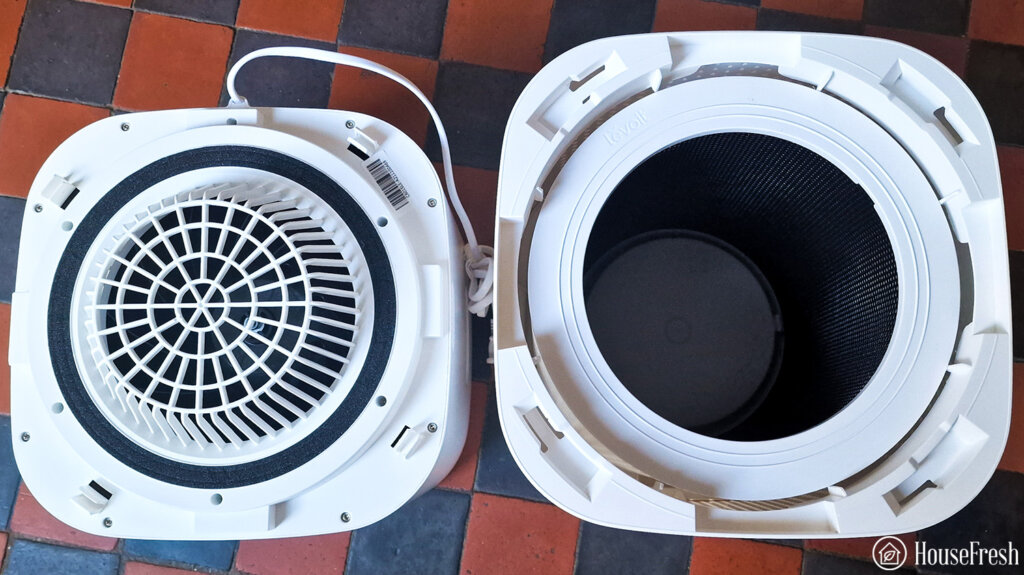
The 211+ comes with, what Blueair calls, a HEPASilent™ filter. According to Blueair, “dual filtration delivers up to 45% more clean air faster, using up to 67% less noise and energy than HEPA filtration alone.” It gives particles an electrostatic charge to cling to the filter more effectively. According to Smart Air, the technology is the same as the one used in ionizers – it’s unfortunate that the user can’t deactivate this function, considering they can produce ozone.
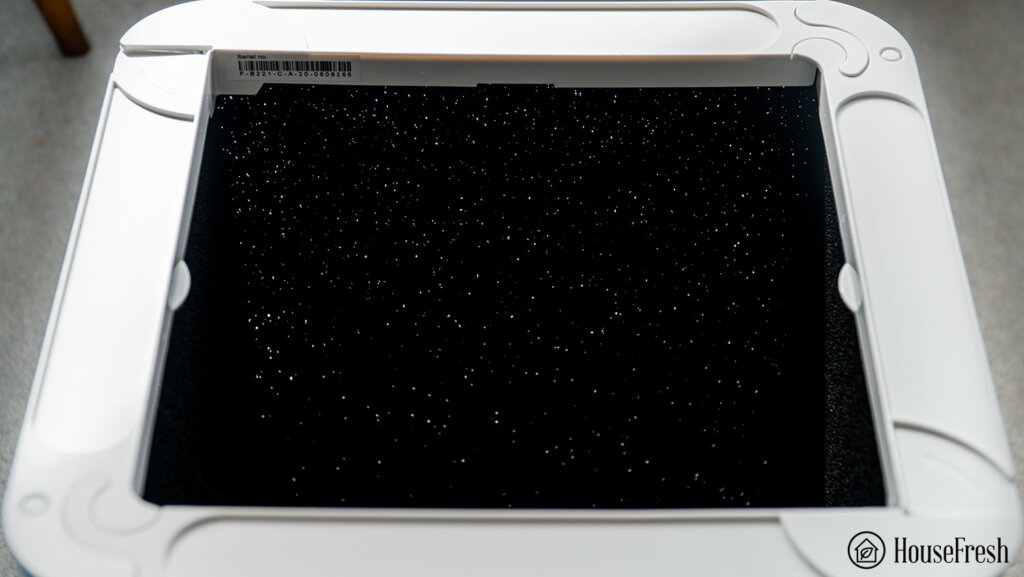
Unlike the 600S, you can remove the pre-filter from the 211+ and wash it, prolonging the life of the HEPA filter as it removes larger particles from the air leaving the HEPA to deal with the smaller ones.
HEPA filters work by trapping contaminants when they become full of particles; they need replacing periodically with new ones to keep them effective.
When it comes to replacing the filters, both Blueair and Levoit keep it simple:
Always remember that when you get your new air purifier, the filter is usually inside the unit wrapped in a protective plastic bag. If you don’t remove this packaging before switching your air purifier on, it won’t work properly, and you’ll probably start to notice the smell of burning plastic.
Air cleaning test results compared
The Core 600S wowed us when we put it through our performance tests. It cleared the simulated contaminants from our testing room in just 15 minutes! Making it one of the fastest-performing air purifiers we have tested.

If you’ve read any of our product reviews before, you’ll know that we don’t take manufacturers’ specifications as gospel. We conduct our own performance tests in a real-world environment to compare different air purifiers under the same conditions.
To see how efficient each unit is at removing pollutants from the air, we fill our 705 cubic ft office full of simulated contaminants (smoke from incense sticks). We then introduce an air purifier, crank it up to its highest fan speed, and measure how long it takes the unit to clear the room of smoke pollution with the help of our indoor sensor from Purpleair.
As with the other categories, the fight for the best-performing unit was another close call. Both the Core 600S and the Blue Pure 211+ performed amazingly in our home tests with only three minutes between them.
The data from our indoor sensor only shows us minute differences between each of these air purifiers. As you can see from the sharp decline in the results charts below, both the 600S and the 211+ spring into action, clearing even the smallest pollutants from our room at speed.
The Levoit Core 600S cleared our test room in 15 minutes
The Blueair Blue Pure 211+ cleared our test room in 18 minutes
As we test all of the air purifiers we review, we can compare them with other units to see how well they perform against each other.
The chart below shows the performance of our two competitors matched against some of the other high-performing units we’ve reviewed.
Even though the 600S and 211+ are considered low-budget air purifiers (costing around $300 each), they out-performed units with much higher price tags.
For example, the Blast Mini from Smart Air is double the price and more than double the size of the 600S and the Alen BreatheSmart 75i can set you back around $750 and isn’t nearly as stylish as the 211+.
Noise levels test results compared
The Core 600S is five decibels quieter than the Blue Pure 211+ when running at its lowest fan speed level.

All air purifiers make noise unless they are turned off. Inside the unit are a fan and a motor that will make a whirring sound that escalates as the fan speed increases. Brands often use words like “silent” or “whisper quiet,” but this doesn’t mean they are mute.
The Core 600S emits 26 dB (equivalent to a whisper from five feet away) at its lowest fan speed and 55 dB (equivalent to a refrigerator) at its highest, while the Blue Pure 211+ produces 31 dB (equivalent to a whisper nearby) at its lowest fan speed and 56 dB (equivalent to an electric toothbrush) at its highest. So, not a whole lot of difference there.
Comparing these two air purifiers with other units we have tested, you can see from our noise comparison chart that they’re both pretty average regarding the sound they produce.
The perception of what is noisy and what is not can be quite subjective. That is why, we always shoot a video so you can get an idea of how it sounds at each one of its fan speeds:
Cost to run each unit compared
Regarding expenses you can expect to pay in the long run, the winner is the Levoit Core 600S again due to its energy efficiency and lower filter replacement costs.

1. Yearly electricity costs = $51.51 (600S) versus $64.12 (211+)
When buying a new air purifier and the initial cost of the unit, you need to keep in mind its running costs. After all, you don’t want a shock when your energy bill comes in.
Different air purifiers have different-sized motors, that take different amounts of electricity to run. With the rising energy costs globally, it’s best to know how much it will cost to run a unit before you buy it.
For the size and cleaning power of these two air purifiers, they are both very energy efficient. Our performance tests revealed that the 600S pulled 49 watts at full fan speed and low 6.2 watts at its slowest. On the other hand, the 211+ pulled 55.5 watts on high and 16.7 watts on low.
2. Yearly filter costs = $100 (600S) versus $139.98 (211+)
Another high running cost to factor into your purchase is replacing your air purifiers’ filters. Brands offer different filter lifespans and charge different prices for replacement filters, usually dependent on size and strength. The good news is that in most cases, you will be able to purchase generic filter replacements at a cheaper cost.
The average lifespan of a HEPA filter in an air purifier is around 6 months, but these guidelines depend on the specific air purifier, how often you use it and how much pollution the filters remove.
The filter in the Levoit Core 600S has to be replaced every 6 months:
Blueair recommends you replace the filter in the Blue Pure 211+ every 6-8 months:
HEPA filters effectively remove airborne contaminants from rooms as they trap and keep those microscopic particles in their tightly woven maze of fibers. As they capture more and more particles, the filter starts to become full and, in turn, less effective. That’s why you need to replace them periodically.
Bottom line: Should you get a Levoit Core 600S or a Blueair Blue Pure 211+ ?
Both the Levoit Core 600S and Blueair Blue Pure 211+ are high-performing, powerful air purifiers. So, which one is best for you?
✅ If you want smart functions, a mobile app and worry about ozone — go for the Core 600S.

✅ If you want a customizable design and value simplicity in the control panel — then the Blue Pure 211+ is the unit for you.

While the 600S has added functions and higher cleaning power, the 211+ has the looks and is easier to operate. But both are fantastic value for money regarding the unit’s initial price and running costs.
SOURCES
We calculated the monthly energy consumption costs with the help of the Department of Energy’s appliance energy calculator. We calculated yearly costs associated with running the 600S and 211+ for 24 hours a day for 365 days. We chose to run this calculation utilizing the U.S. average utility rate ($0.12) at the moment of writing this product comparison spotlight on June 29th, 2023.


